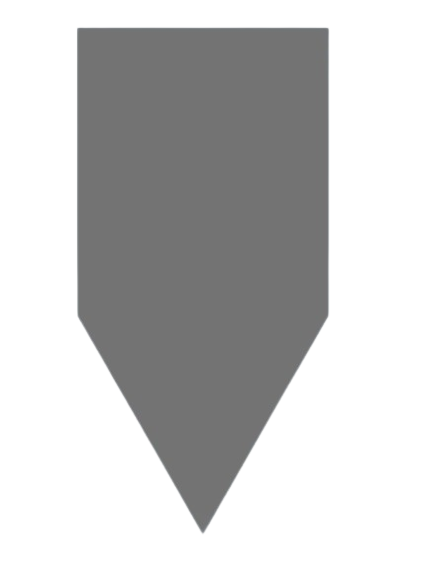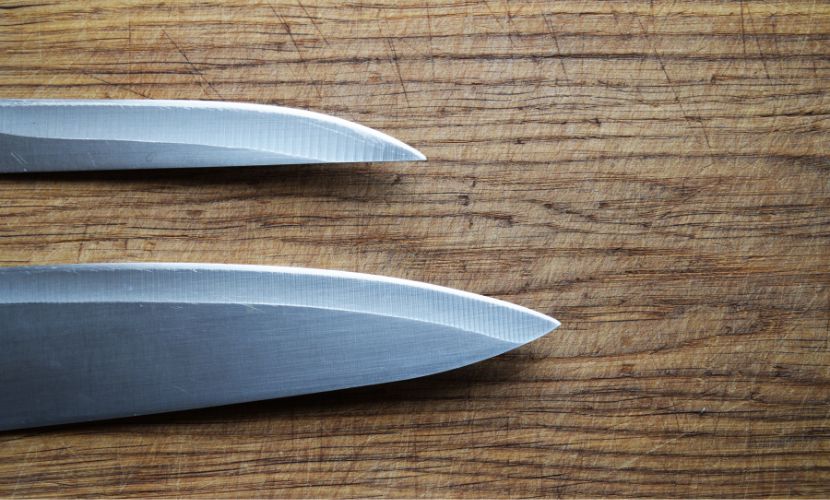The sort of bevel on the blade of a kitchen knife can have a significant impact on how well it performs. For home cooks who want to increase their knowledge and proficiency with knives, it is important to understand the distinctions between single-bevel and double-bevel blades.
We’ll examine the features, benefits, and ideal applications of these two types of knives in this post so you have the knowledge you need to select the finest one for your kitchen. Understanding knife bevels may take your cooking to the next level, regardless of your degree of experience.

What is a single bevel knife?

A kitchen knife with only one angled edge is called a single bevel knife. A flat edge on one side and a sharp edge on the other are possible because of this angle, known as a bevel, normally seen on one side of the blade. Single bevel blades are frequently used for specialized cutting jobs such as:
- Slicing raw fish for sushi
- Precision cuts in meats and vegetables
- Filleting fish
- Carving poultry
- Peeling and shaping fruits and vegetables
Sharpening a single bevel knife is pretty simple.
Because the edge is only on one side of the blade, it can be honed and sharpened more precisely and accurately.
Furthermore, single bevel blades are frequently employed for specific cutting tasks that necessitate accuracy and control.
A single bevel knife may not be as pleasant to use as a double bevel knife for left-handed people because the angle of the bevel is meant for right-handed people. To accommodate left-handed people, certain single-beveled knives are made expressly for left-handers and have the bevel on the opposite side of the blade. The sharp edge will be on the left side of the blade, making it more pleasant to use for left-handed people.
In summary, single bevel knives have a single angled edge on one side of the blade, making them easy to sharpen and suitable for specialized cutting jobs requiring precision and control.
What is a double bevel knife?

A double bevel knife is a type of kitchen knife that has angled edges on both sides of the blade. These angles, or bevels, are typically symmetrical and located on opposite sides of the blade, creating a sharp edge on both sides.
Many diverse cutting tasks may be accomplished using double bevel blades – Slicing, dicing, mincing, and chopping.
Advantages of a double bevel knife:
- Versatility: Can be used for a wide variety of cutting tasks
- Ease of use for both left- and right-handed individuals: The symmetrical bevels on both sides of the blade make it suitable for both left- and right-handed individuals.
In summary, Double bevel knives are characterized by having angled edges on both sides of the blade, making them versatile and suitable for a wide variety of cutting tasks, and they can be used by both left- and right-handed home cooks.
Comparison of single bevel vs double bevel knives
| Single Bevel | Double Bevel | |
| Construction | Single angled edge on one side of the blade | Angled edges on both sides of the blade |
| Advantages | Easier to sharpen, specialized cutting tasks, ideal for left-handed individuals with the bevel on the left side | Versatile, easy to use for both left- and right-handed individuals |
| Best Uses | Slicing raw fish for sushi, precision cuts in meats and vegetables, filleting fish, carving poultry, peeling and shaping fruits and vegetable | General slicing, chopping, and dicing tasks |
| Examples | Yanagiba, Deba, Usuba | Chef’s knife, Santoku knife, Paring knife |

Conclusion
Single bevel and double bevel knives are two types of blades that differ in construction, benefits, and optimal applications. Single bevel knives have a single angled edge and are best suited for specialized cutting activities requiring accuracy and control, whereas double bevel knives have inclined edges on both sides and are adaptable and appropriate for basic slicing, chopping, and dicing tasks. Sharpening single bevel knives is simple, however double bevel blades can be used by both left and right-handed people. Understanding the distinctions between these two types of knives is critical for home cooks wishing to improve their cooking skills and expertise.




Post Your Thoughts